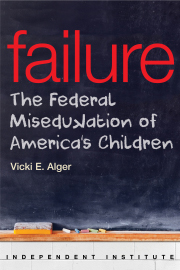There’s no such thing as a free lunch, or free college. But that reality hasn’t stopped Democratic presidential hopeful Sen. Elizabeth Warren of Massachusetts from touting her trillion-dollar-plus plan.
Step one of her plan would cancel most or all of the student loan debt carried by nearly 45 million Americans, up to $50,000 per person as long as their household incomes don’t exceed $250,000. This step alone would result in a one-time cost of $640 billion.
Step two is ensuring students don’t accumulate loan debt ever again by making college “free” like K-12 public schools. Officially dubbed the Universal Free College program, the estimated cost of this part of her plan is a jaw-dropping $1.25 trillion over the next 10 years. But never fear: Warren will pay for it by imposing an Ultra-Millionaire Tax on the rich.
There are several flaws in Warren’s free college scheme, starting with the fiction that her proposed tax on “ultra-millionaires” will actually raise enough money to pay for it.
For example, most European countries have ditched their wealth taxes in large part because they generated so little revenue. So, when the free-college coffers come up short, average taxpayers will be stuck making up the balance—a very real possibility, especially since Warren also has vowed to bankroll her $70 billion-a-year “free” Universal Child Care and Early Learning plan with the same Ultra-Millionaire Tax.
One of the worst elements of Warren’s plan is that college degrees will become about as meaningless as many of today’s high school diplomas.
Americans already spend an average of more than $13,000 per pupil, per year, for every public elementary and secondary school student—almost as much as they spend for each student at public two-year colleges. That kind of money should buy a top-notch education. Yet nearly 75 percent of high school graduates are not deemed college-ready in English, reading, math and science.
If history teaches us anything it’s that we can’t subsidize our way to college affordability. The federal government’s reach into higher education has grown steadily over the past 60 years—and with it college inflation rates, which are about twice as high as general inflation rates. As a result, average tuition and required fees at public two- and four-year institutions have increased by more than 300% since 1963.
Contrary to what Senator Warren claims, the cause of these skyrocketing increases is too much government funding, not too little. Mounting evidence shows that colleges gobble up increases in federal funding, rather than use them to reduce the burden on families and students.
According to one estimate, if colleges actually did use financial aid to lower student costs, a typical four-year college degree would cost about $3,500 less, and overall higher education spending would be about $59 billion lower each year. Other research finds that tuition more than doubled from 1987 to 2010 in response to higher federal student loan limits. Absent those changes, net tuition would have increased by about 16 percent.
Perhaps the greatest cost inherent to Warren’s “free” college plan is nurturing the notion that attending college is an entitlement instead of something earned. Such an entitlement mentality helps explain much of the outrageous behavior transpiring on American college campuses largely on the taxpayers’ dime. No wonder Nobel Prize-winning economist Milton Friedman once quipped that higher education should be taxed instead of subsidized to help offset “its negative externalities.”
With federal debt exceeding $22 trillion, Warren’s proposed college free-for-all is another transparent attempt to buy votes by feeding the public’s insatiable appetite for entitlements.









